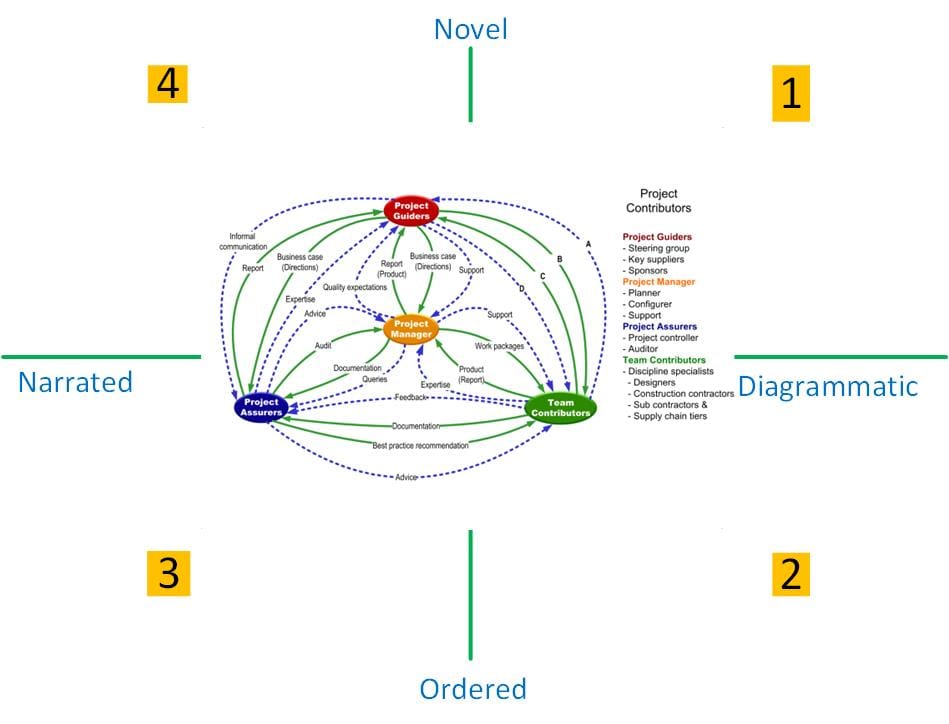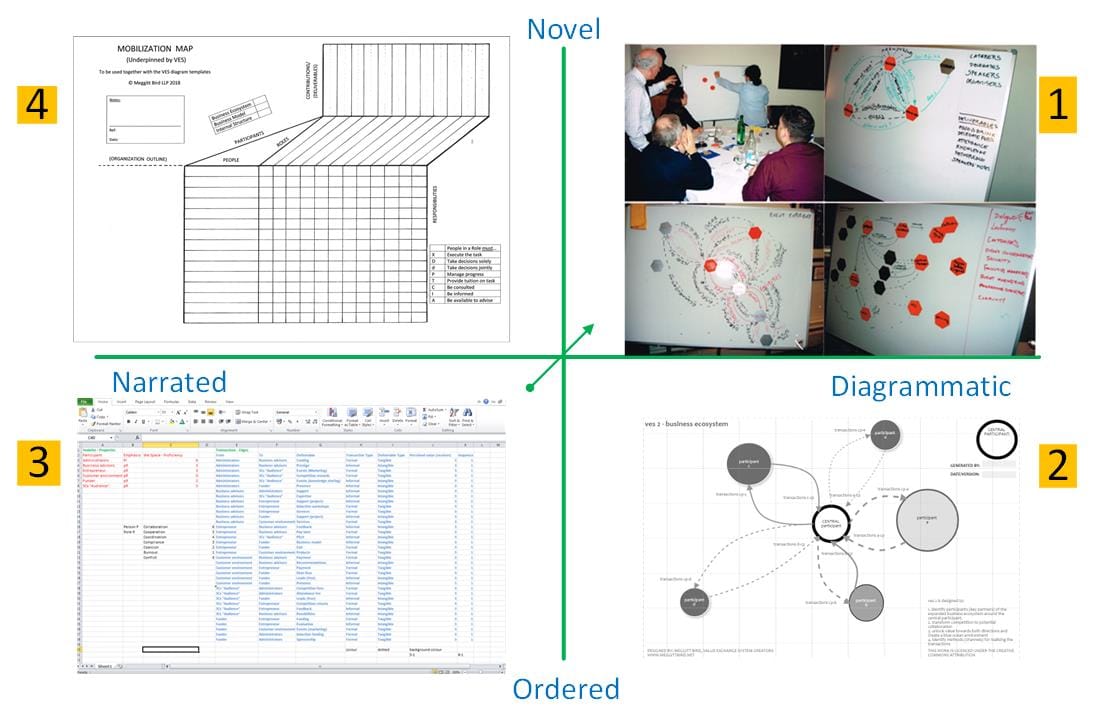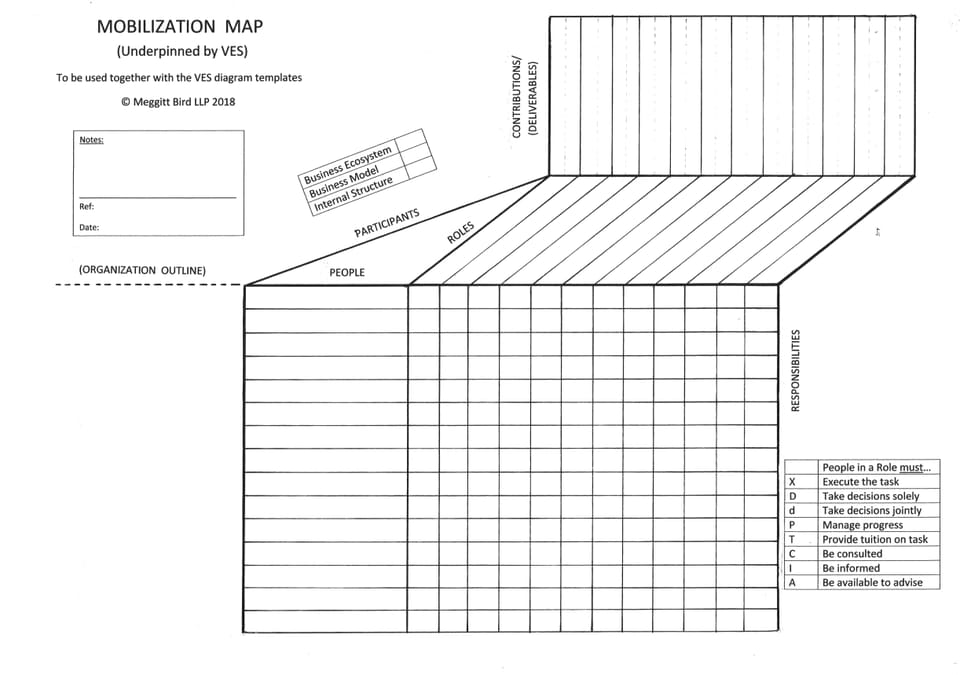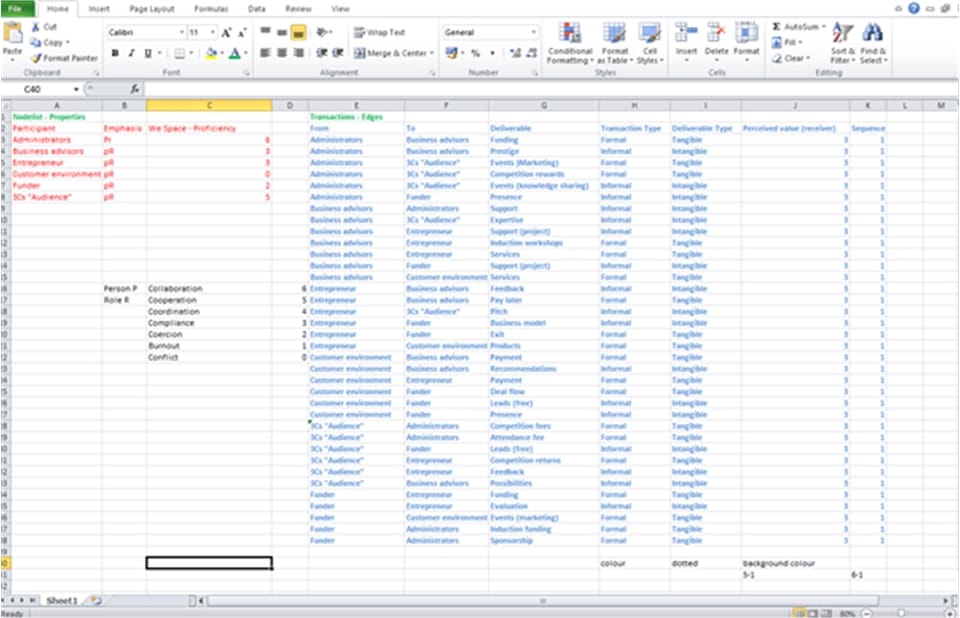VES Visualization options (H4)
Summarized are four basic ways you can use to develop a VES diagram.

Summarized below are four ways (Types 1, 2, 3 & 4) in which Participants can develop a VES diagram.
I will cover each option in detail in subsequent HOW? posts, commencing with the Type 1, "Diagrammatic/Novel" way. This is used to outline the Participants' understanding of the current business model of their part of the organization, sometimes known as a Descriptive VES diagram.
The business model in D2 was a Type 2, "Diagrammatic / Ordered" way using pre-prepared templates devised by Christie Sarri.
As we delve further into the Analysis of a business model, the Type 3, "Narrated/Ordered" way comes into its own. Data, including characteristics considered important - both tangible and intangible, are added to a spreadsheet. This is then used to develop further the Descriptive VES diagram and then co-create candidate future organizational configurations H7.
Once a new organizational configuration has been selected, the result is sometimes know as a Prescriptive VES diagram. This can then be used to underpin the plan for implementing the required changes and monitoring progress.
Try the Mobilization Map in the Type 4 "Narrated/Novel" way to kick-start the ensuing change project. Incorporate also complementary techniques including a value blueprint [1] and vision statement.
The basic steps in developing a VES diagram are simple, as superfluous detail has been eliminated. Master these for the first Descriptive VES diagram and the additional refinements will follow easily.

Summary:
A Descriptive VES diagram covers the current business model - the way in which Participants perceive the way their part of the organization works.
A Prescriptive VES diagram is the result of analysing the Descriptive VES diagram in order to incorporate new insights on how the organization could work more effectively to meet both current and future anticipated needs. This corresponds to the "essential business model" introduced in the VES Handbook.
A typical example of the transition from a Descriptive to Prescriptive diagram is the transformation of an enterprise's products and services to incorporate more eco-friendly characteristics. Initially envisaged by a CEO, the display of the updated diagram invites dialogue with all internal Participants and eventually the whole value network (which includes suppliers, customers, and their customers.)
[1] R. Adner, The Wide Lens - a new strategy for innovation, London: Portfolio Penguin, 2012.



